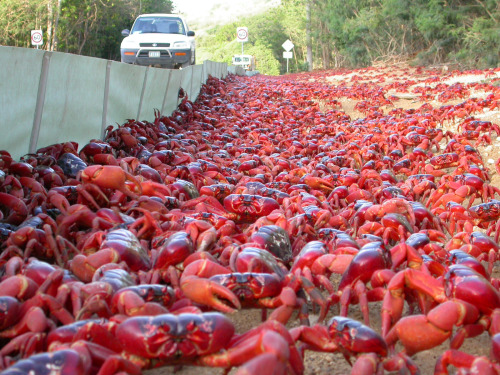-
Jane Espenson (from interview with Advocate.com)\
I dunno how many which ways this needs to be said
(via aragingquiet)
Russian Sledgesvia firehose
Jane Espenson (from interview with Advocate.com)\
I dunno how many which ways this needs to be said
(via aragingquiet)

Holy crap. The rumor that a startling 90 episodes of lost Doctor Who material had been recovered seemed too good to be true. So we weren't entirely surprised when it was shot down. But now, the world's biggest expert on missing episodes is saying it's true after all. Could our dreams be real?
Russian SledgesI think I know what to do with the leftover digital-watch-print fabric from my fathers day hadkerchief project
In his latest column, William Pannapacker tackles the issue of job-placement rates in doctoral programs and decries the lack of solid data.
“Advisers and prospective students need something more than a scattered helping of infrequently updated best-case scenarios,” he writes. “We need externally verified, reasonably comprehensive data about individual programs and maybe even individual advisers.”
The Chronicle wants to take Mr. Pannapacker up on his challenge. We would like to figure out a way to gather reliable data about job placements for Ph.D.’s. Who’s getting jobs? Where are they? Which doctoral programs are doing well at placing their Ph.D.’s in tenure-track positions? Which are doing poorly? Are many colleges making an effort to help their Ph.D.’s land nonacademic jobs?
We don’t know what form the data will take, but for now we’re calling it the Ph.D. Placement Project.
We believe prospective graduate students, current students, and departments themselves would love to know the answers to those questions. We know this isn’t going to be easy. And we don’t have all the answers about how to proceed. That’s why we need your help and your stories.
Here are a few ways you can get involved.
SHARE: We need to know what we don’t know. If you have a Ph.D., please consider sharing some basic information about your job-placement experience here. (Don’t worry, it’s anonymous.)
CONTRIBUTE: Whether or not you have a Ph.D., we want to hear your ideas on how we can collect and publish good data in a way that would be most helpful. Leave those ideas in the comments of this post, or e-mail us.
STAY POSTED: Get on the Project’s e-mail list and start following our Twitter.
And, finally, keep checking this page, where Mr. Pannapacker and others will be chiming in.
Russian SledgesI'm the only person I know who routinely checks their suitcase. I have made my peace with the fees.

No one’s accusing America’s largest airlines of being shining beacons of efficiency and customer service. But in many ways, they seem to willfully shirk the natural, logical order of things in an active bid to make traveling as miserable as possible. It’s as if they’re constantly searching for that magical inflection point where price and frustration are equally maximized.
In case you can’t tell, I’m one of those frustrated travelers, sometimes on a weekly basis. And I’m not shocked that American, United, Delta, and US Airways have all gone bankrupt at some point in the past 15 years. It’s not entirely their fault — air travel was way off in the wake of September 11th — but their crippling inefficiency certainly hasn’t done them any favors.
None of those inefficiencies frustrate me more than the simple act of boarding with carry-ons. No two major international airlines can agree on exactly how to board an aircraft, but the one thing they can agree on is that you should be charged a sizable fee to check a bag — a relatively recent "revenue innovation" designed to prop up the bottom line.
Chaotic amoebas of confused, impatient humans subject to ever-changing boarding rules
And that’s fine, I get it. Airlines are for-profit institutions. They like to make money, and they’re going to charge you wherever they can. The problem is that checked bag fees have created a side effect that’s extraordinarily obvious to anyone thinking about it for half a second: Passengers who would’ve previously checked bags are instead choosing to bring those bags on board at no cost. Lines at the gate — chaotic amoebas of confused, impatient humans subject to ever-changing boarding rules — move slowly as most passengers attempt to board with overstuffed "rollaboards" that are only appropriate to bring on a plane in that they’re short enough to fit (sort of) in overhead bins.
Once aboard, a fraction of these passengers are inevitably unable to find an available bin. They stand in the aisle, confused, some with panicked looks on their faces, before turning around and returning to the front of the aircraft to consult with a flight attendant. Other passengers are stopped in place for minutes at a time while others go through this "I can’t find a bin" ritual. It’s like clockwork.
It’s such clockwork, in fact, that airlines started nipping it in the bud by occasionally offering to check in rollaboards for free at the gate. "We’ve got a very full flight today, so if anyone would like to check their bag at no cost, please see me," the announcement goes.
And over time, the exception became the norm, driven by airlines rearranging schedules to ensure completely full flights and by customers hoping to avoid feeds. Overhead bins were never designed to accommodate an entire aircraft’s worth of luggage — that’s what the cargo hold is for. And so Pavlov’s dog syndrome sets in: Passengers bypass check-in counters en masse, knowing that they’ll almost certainly be offered the opportunity at the gate to check luggage at no cost. Meanwhile, these enormous bags clog TSA screening conveyor belts and jetways.
 The Airbus A350 XWB, an example of an aircraft you will probably have a frustrating time boarding in the future.
The Airbus A350 XWB, an example of an aircraft you will probably have a frustrating time boarding in the future.
Checked bag fees aren’t going away, that’s for sure — but there are two painfully obvious things that airlines can do immediately to alleviate the problem. First, charge the same fee at the gate to check a bag that you charge at the counter (or, heck, maybe even a higher "penalty" fee). Second, charge a fee for any carry-on beyond the first, which is usually a purse or laptop bag. Airlines, you love fees — surely you can get behind this plan?
The boarding challenge has already been scientifically solved
To its credit, American recently changed its boarding process to favor passengers who don’t have luggage at the gate, permitting them to board before almost everyone else. It’s a clever idea, but it also doesn’t solve any actual problems: These passengers don’t ease the overall boarding process by boarding early, since they don’t need the overhead bins anyway. Indeed, airlines like United and American have sent the boarding process into even deeper disarray by making early boarding a "perk" (you can even pay American a fee to board sooner, one of the most egregious money-grabs in the business). In reality, the boarding rules should be about one goal, and one goal only: boarding as quickly and efficiently as possible. Goodness knows they have enough trouble departing on time as it is.
What’s funny (in a gallows humor sort of way) is that the boarding challenge has already been scientifically solved. A smarter guy than me has demostrated the most efficient way to board an aircraft, and as far as I know, no airline has even considered trying it in the two years since. And every time I go to the airport and find that my airline has made some bizarre, illogical change to the boarding process that obviously isn’t focused on getting the plane off the ground on time, I learn all over again that "efficiency" isn’t in their vocabulary.
Beyond supporting airlines that don’t buy into this insanity — Southwest, for instance — I don’t quite know what to do. I’ve yelled at @United on Twitter on several occasions, which, while cathartic, probably doesn’t do much good. And my exasperated head-shaking while waiting to board as a "MileagePlus Explorer card member through the Premier lane" does little except garner knowing smiles from my fellow passengers.
Maybe I’ll drive.
Russian Sledgesarabic typography autoshare
via firehose
Russian Sledgesvia firehose via tadeu
Not long ago, we began rendering 3D models
on GitHub. Today we're excited to announce the latest addition to the visualization family -
geographic data. Any .geojson file in a GitHub
repository will now be automatically rendered as an interactive, browsable map, annotated
with your geodata.
People are already using GitHub to store everything from Chicago zipcodes to community radio stations to historic hurricane paths, and we can't wait to see what the community will begin to collaborate on next.
Under the hood we use Leaflet.js to render the geoJSON data, and overlay it on a custom version of MapBox's street view baselayer — simplified so that your data can really shine. Best of all, the base map uses OpenStreetMap data, so if you find an area to improve, edit away.
Maps on GitHub support rendering GIS data as points, lines, and polygons. You can even customize the way your data is displayed, such as coloring and sizing individual markers, specifying a more descriptive icon, or providing additional human-readable information to help identify the feature on click.
Looking to get started? Simply commit a .geojson file to a new or existing
repository, or dive into the docs
to learn how to customize the map's styling.
Russian Sledgesvia sauciehose
Longtime Washington Post restaurant critic Phyllis Richman originally wanted to be an urban planner, although she never got much farther than sending off an initial grad-school application to the Department of City and Regional Planning at Harvard's Graduate School of Design.
An assistant professor in the department, William A. Doebele, Jr., sent her back this letter, which was reprinted 52 years later in Sunday's Washington Post:
Although we have not yet received your official transcript from Brandeis, on the basis of your letters of recommendation there would seem to be a possibility of your admission to the Department of City and Regional Planning even at this date.
However -- to speak directly -- our experience, even with brilliant students, has been that married women find it difficult to carry out worthwhile careers in planning, and hence tend to have some feeling of waste about the time and effort spent in professional education. (This is, of course, true of almost all graduate professional studies.)
Therefore, for your own benefit, and to aid us in coming to a final decision, could you kindly write us a page or two at your earliest convenience indicating specifically how you might plan to combine a professional life in city planning with your responsibilities to your husband and a possible future family?
Richman never replied – at least, not until after recently stumbling across Doebele's letter among boxes of old paperwork. Her belated and wonderful response ran in yesterday's Post, alongside a tremendously unsatisfying mea culpa from Doebele ("This is not a letter that I would write today"). Richman explains that she was so discouraged by Doebele's assignment that she never completed the application, and she wound up instead following a career in writing that seemed to offer less resistance.
"While I ended up with a rewarding and varied professional life," she writes, "your letter shows just how much Harvard — not to mention my husband, our families and even myself — didn’t give my career the respect it deserved when I was just starting out."
Doebele's original letter, now worn along the folds, is particularly jarring for the date. It was sent in June of 1961, the same year that Jane Jacobs' The Death and Life of Great American Cities came out. Gail Collins' fantastic book chronicling the last 50 years of women's history in America is full of jaw-dropping stories just like this one from would-be professional women who were told they couldn't do serious work and make their husbands dinner every night at the same time. But the timeline still astounds: All of this was so... recent.
So recent, in fact, that Doebele still doesn't seem to get it. As he assessed the situation today, half a century later, "I thought it fair that you be aware of employment conditions as I then perceived them." Of course, his letter had nothing to do with warning her of her rough employment prospects. It was perpetuating them.
A younger woman just wants Richman to rip into the guy. But her reply is patient and measured, slipping in a perfect last word for anyone in the design field today still steaming over gender bias. Be sure to read it.
Above image courtesy of the Prelinger Archives.
Russian Sledges"The stronger the rear- the stronger the front!"
via overbey

Женщины! Изучайте производство, заменяйте рабочих ушедших на фронт! Чем крепче тыл-тем крепче фронт! / Women! Learn to manufacture, replace workers who went to the front! The stronger the rear- the stronger the front!
Russian Sledgesvia rosalind

Russian Sledgesvia firehose, via Vjuliao









The Astonishing Annual Red Crab Migration
Named one of the planet’s most breathtaking migrations, the Christmas Island red crab exodus is a natural phenomenon that continues to astonish.
Making it onto CNN Travel’s recent list of the “10 most spectacular wildlife migrations,” the island’s annual red crab migration is an astounding event that involves the movement of millions of vividly colored crabs as they leave their in-land homes to breed and release eggs into the sea.
An Australian territory, Christmas Island lies some 2,600 kilometers north-west of Perth in the middle of the Indian Ocean. While just 1,500 people live there, it is home to an estimated 120 million crabs.
Photo credit: James Morgan [website]
Russian Sledgesmarie de france's "lay of the werewolf": gayest fairy tale ever
Russian Sledgesapparently you can "hack" a drink now

Over the weekend, Dan Pashman of the Sporkful took to the airwaves and discussed the sorry state of the late modern piña colada with "Weekend Edition" host Rachel Martin on NPR. The gist of it is that the rum cocktail is traditionally based on Coco López, a stabilized and emulsified product that apparently scares some people off, and that it's never been improved. Until recently: The MSNBC host apparently developed a hack a while back that replaces the cream of coconut with orgeat, and the result is a less sickly sweet drink. The Maddow Colada recipe — which may or may not be crucial to a more bearable summer — is straight ahead.
The Maddow Colada
1.5 oz light rum
1 oz 8 year old Bacardi or other nice medium-bodied amber rum
1.5 oz unsweetened coconut milk
1.5 oz orgeat (almond syrup Maddow recommends Teisseire. Torani is most common.)
4 oz pineapple juice
Blend with ice.
Don't strain, serve in a short glass, garnish with pineapple wedge, tiny umbrella
serve with short, stubby (fat) straws.
Cocktail Moment by proxy: The Maddow Colada [Maddow Blog/MSNBC]
Read more posts by Hugh Merwin
Filed Under: getting caught in the rain, cocktails, pina colada, rachel maddow, the sporkful
Russian Sledgesold monk!

There are enough intriguing factoids and anomalies in the International Wine & Spirits Research’s global league table of booze to fuel a year’s worth of barroom debates. (Russia consumes an absolutely staggering amount of vodka, and France drinks more Scotch whiskey than all of Britain.) But one country’s consumption of rum jumps right off the chart: India drinks a massive amount of rum compared to the rest of the world—more than 400 million liters a year, or twice the consumption of United States in second place. Per capita the figures are not quite as impressive. India drinks 0.3 liters per person a year, nowhere near Caribbean cohorts like Cuba or the Dominican Republic, but that still puts it on par with developed countries like France, Britain and Germany.
Why rum and not, say, gin? That’s the favorite in the Philippines, which has a similarly muggy climate.
In turns out the secret to India’s fondness for rum can be traced to a single brand, Mohan Meakin’s Old Monk. It’s the fifth-most popular rum in the world, but few outside of India have ever heard about it. Unchanged for decades, Old Monk survives in India by word of mouth—its owners say they have never spent a dime on advertising—and the custom of Indian enthusiasts like COMRADE, the “Council of Old Monk Rum Addicted Drinkers and Eccentrics.”
Devotees claim that when drunk with soda or water, Old Monk doesn’t give you hangovers—a cuba libre-like Old Monk with cola spiked with lime and chili is also permitted. It’s very cheap at Rs 400 ($6.85) for 750 ml; along with its competitors, Old Monk can take advantage of India’s large sugarcane crop for its raw materials.
Alas for Old Monk and its fans, modern times have not been kind. Sales have plunged by about half since 2002 and it now sells only a quarter of the volume of category leader McDowell’s No.1 Celebration, owned by the Indian giant United Spirits Ltd. In April, Mohan Meakin announced that it would revamp Old Monk’s packaging for the first time and roll out a new pricing structure to position the rum as a premium product. Some advertising might also help—India bans outright alcohol ads, but companies get around this sponsoring other products and events.
A turnaround is not impossible. Old Monk is a venerated brand, and a bit of marketing could unleash the enthusiasm of longtime customers while finding a new audience among young Indian drinkers and perhaps even rum aficionados around the world. But there is also a chance that the world has moved on, and Old Monk will be doomed to insignificance, or perhaps snapped up by one of the massive spirits conglomerates that now dominate the industry. In the end it will come down to one question: Can you teach an Old Monk any new tricks?
Russian Sledgesvia overbey
Here's a sort of bewildering, looking glass sort of story that illustrates just how deep the secrecy goes in the entire intel process. As part of the on-going Snowden story we were preparing a piece on the intelligence oversight process itself - particularly the mechanics of just how the congressional oversight committees work. Observers and critics have long argued that classified briefings are so circumscribed and controlled - often with members unable to bring their more technically knowledgable staffers along - that the process of oversight becomes more nominal than real. We spoke to a number of sources for the story and one was a former General Counsel of the Senate Select Committee on Intelligence. And in the process of this reporting the Intel Committee forbade her from describing how the classified briefings are run. Mind you, not any actual classified material or information. Just the procedures of the classified briefings themselves, stuff like what members are allowed to ask and stuff like that. Here's the story.
Russian Sledgesvia firehose

The US has grown itself too much sugar. It has done so for years—and yet cane and beet farmers produced record amounts of sugar again this year, says the US Department of Agriculture (USDA).
If this were a free market that would be terrible news for the US’s 5,000 or so beet and cane growers. But it’s not. In fact, the USDA just agreed to spend $38 million on buying sugar in order to prop up the prices. That’s adding a tax bill to a sugar aid program that already costs US consumers $3.5 billion each year, according to research by Iowa State University.
Grasping why the government is doing this reveals a complicated—some would say insane—lattice of price controls, import quotas and government lending to prop up both sugar growers and sugar refiners. Here’s how it works.
The argument made for sugar aid is that at market prices, US sugar refiners wouldn’t buy from US farmers, because lower foreign labor costs make imported sugar so much cheaper—and that’s even with import tariffs. But the government doesn’t subsidize sugarcane and beet farmers, the way it does with grains. Instead it sets an artificially high price for raw sugar. It then loans money to sugar refiners to buy the sugar from US growers at that price.
The sugar they refine acts as their collateral for the loan from the government. The refiners can either repay the loan with interest after selling the refined sugar, or “forfeit”—meaning that they give the USDA a heaping pile of collateralized refined sugar. That’s not a “forfeiture” in the sense we usually think of it, though. It just means that if a refiner can’t get a higher price in the market, it can give the sugar back to the government, taking a bath on refining costs but not much else.
At the same time, the US government restricts sugar imports using tariffs; if it didn’t, imported sugar would undercut the USDA-set market price. But then these limits on imports apparently make life too difficult for sugar refiners. So they are issued “import credits”, which are licenses to import some foreign raw sugar as long as they export an equivalent amount of refined sugar.
But now, with production at an all-time high and raw sugar flooding the market, prices have been driven below the government-set threshold and refiners are struggling to find buyers who will pay more than the government loaned them. That means forfeitures—an estimated $700 million worth, in fact.
Since the forfeiture scheme has seldom been tested, it’s not clear what exactly the government would do with all that sugar. The Wall Street Journal notes that the last time this happened, in 2000, it donated the stuff to prisons and assisted-living facilities (paywall). New laws require it to sell the sugar to ethanol manufacturers—but no one’s sure how that would work.
Instead, the government has gone for a cheaper option. It will give farmers $38 million for raw sugar, and then sell it to refiners. The refiners won’t pay the government in cash, however, but in import credits. Confused? Never mind: the point is that this will have the effect of reducing imports and thus tightening US sugar supply. The plan will mop up about 300,000 tons (272,000 tonnes) of sweet stuff from the US market, says the USDA.
Part of the reason that the USDA’s knotty sugar scheme has been allowed to go on for so long is probably that it’s not a subsidy in the conventional sense, so it’s thought to cost taxpayers nothing. And strictly speaking, that’s true. But while keeping prices artificially high doesn’t hurt taxpayers, it does hurt consumers—who are, of course, to a large extent the same people. American sweet-tooths coughed up nearly $0.70 per pound for sugar in the last fiscal year; global consumers paid around $0.28 per pound.
Put another way, US taxpayers will end up paying $38 million to protect a system that already charges them an extra $3.5 billion a year. Talk about salting the wound.
Russian Sledgesvia firehose

The problem is that US health care costs too much. The solution could be telling people what they’re paying for, if only the government would come clean.
We know that Americans spend more money on health care than anyone else:

Part of the reason is that most Americans don’t pay for their health care directly. Insurers or the government pick up the tab, so consumers can’t really compare prices or quality and competing providers don’t really compete. Many consumers assume that paying more would be paying for the best, but studies show no correlation between the cost and quality of basic procedures, like childbirth. Indeed, some of the most expensive care is the worst, and vice versa:

That chart is from a young San Francisco company called Castlight, a big data firm that launched a service to help big employers, from companies like Safeway to the state of Indiana, cut health insurance costs. Castlight uses each employer’s historical data on insurance claims and payments to develop price and quality comparisons for local health-care providers, from physicians to pharmacists. That data is provided to people on the insurance plan, who use web and mobile apps to find the best combination of cost and quality for their needs. That can mean big savings if the cost of a procedure like a colonoscopy varies by as much as a factor of seven:

Right now, 4 million people use Castlight’s service, and the company is set to grow. But it can do better, according to its CEO and co-founder, Dr. Giovanni Colella, if it gets more data from the government.
The 2010 US health care reform, a.k.a. Obamacare, required the Department of Health and Human Services to make public certain data on how much people have paid for various medical procedures. The department is six months late in doing so. And only 12 states maintain their own public databases showing price comparisons. Most allow health-care providers to enter contracts with insurance companies to keep their costs secret.
Perhaps most importantly, though, Castlight wants access to the vast repository of data in Medicare, the government health-insurance program for senior citizens. Today, Colella told the lawmakers responsible for Medicare as much at a public hearing of the US Senate’s finance committee. The committee chairman, Max Baucus, asked to hear the argument against Medicare releasing that data; no one had an answer.
“The providers don’t want that,” Colella told Quartz after the hearing. The cozy relationship between American physicians and Medicare administrators gives them “incredible influence” over what is released, he said. The reason for their resistance is obvious: More transparency about what medical care costs would mean lower billing.
The good news for American consumers and taxpayers is that the country’s health-care inflation is already coming under control. Today, the government reported that health-care prices fell for the first time in decades, and PricewaterhouseCoopers released a report suggesting that the trend will continue. The main reason is that employers, in an attempt to keep down health insurance costs, have been passing more of the costs on to consumers (in the form of higher premiums and deductibles.) That’s made consumers look for cheaper services. But to keep that trend going consumers will need a better idea of how to spend their money most efficiently—and companies like Castlight may be best positioned to do it.
Russian Sledges'"Tom did what the police wouldn’t do," Schwitzman said during closing arguments yesterday. "Tom protected his home, his wife, his neighbors and himself." Asked by a prosecutor last week if he considered himself a hero, Dunikowski answered yes. "I tried to scare them away so I fired warning shots into the air,' Dunikowski testified. It's unclear how shots fired "into the air" ended up hitting two people on the ground, but apparently one can be a hero without having very good aim.'
 One July night in 2011 Thomas Dunikowski was enjoying dinner on his neighbor's front porch in the Marine Park section of Brooklyn when their lazy summer idyll was shattered by (what else?) teenagers. According to Dunikowski and his neighbor, a pack of rowdy youths started ripping open garbage bags and throwing beer cans into the yard. An altercation between Men and Teens ensued, at which point one neighbor called 911 to report, "They’re fighting. They’re jumping all over the yard." [ more › ]
One July night in 2011 Thomas Dunikowski was enjoying dinner on his neighbor's front porch in the Marine Park section of Brooklyn when their lazy summer idyll was shattered by (what else?) teenagers. According to Dunikowski and his neighbor, a pack of rowdy youths started ripping open garbage bags and throwing beer cans into the yard. An altercation between Men and Teens ensued, at which point one neighbor called 911 to report, "They’re fighting. They’re jumping all over the yard." [ more › ]
Russian Sledgesvia overbey
“(Christ) is a true revolutionary and we are revolutionaries of this revolution, because we walk on the path of the greatest transformation in the history of mankind. A Christian, if he is not a revolutionary, in this time, he is not a Christian!”
– Pope Francis, speaking Monday at the opening of the Diocese of Rome congress.
The post Quote of the Day: Pope Francis appeared first on Religion News Service.
Russian Sledgesvia firehose
New York City photographer Dave Bledsoe recently discovered a spooky pay phone graveyard under an elevated highway on the west side of Manhattan.
Underneath the elevated West Side Highway at 135th and 12th Avenue I found this telephone graveyard. At least a one hundred old, battered pay phones were locked behind a fence near the Park’s Department building. I almost took these on my iPhone, but my irony levels are dangerously low these days.
photos by Dave Bledsoe
via Gothamist
Russian Sledgesjust made
Russian Sledgesdon't even date people who are rude to servers
Russian Sledgesdrunk british nation survives all kinds of shit

Losing your keys while you're drunk is something that happens to most people, eventually. What doesn't usually happen is the next part of 20-year-old Tom Stilwell's story: surviving a fall from a neighbor's 15th floor balcony at 2 a.m. after attempting to jump to a balcony below.


The High Trestle Trail bridge, one of the longest, tallest pedestrian bridges in the country, is designed to reflect the coal-mining history of nearby Des Moines River towns